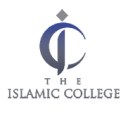ISC119 – Islamic Moral Values
Course Overview
This module aims to familiarize the student with the theoretical and practical aspects of Islamic moral values, and train them with the necessary skills of public presentation and speaking on ethical issues. Moreover, it will introduce them to the primary sources related to Islamic moral values: the Qur’an and the ahadith.
Module Info
- Syllabus
- Outcomes
- Strategy
- Material
sYLLABUS
- Historical overview and Historiography of Islamic Art
- Calligraphy and calligraphic art of the Qur’an
- Arts of the book: painted and illuminated manuscripts
- Textiles
- Ceramics
- Metalwork
- Islamic ornament (geometry, arabesque) and the question of figural representation in Islam
- Islamic religious architecture: mosques and shrines
- Urban planning: baths, gardens and palaces
- Funerary landscape: tombs and mausoleums
Learning Outcomes
Knowledge
On completion of this module, the successful student will be able to:
- Present a structured and coherent analysis of Islamic art themes based on religious, theological and philosophical aspects of Islamic Cultures and Civilisation (A2)
- Discuss important factors related to aesthetic appreciation of Islamic art (A3, A6)
Skills
This module will call for the successful student to:
- Communicate ideas about different aspects of Islamic art by gathering and processing information and artwork from a variety of paper, audio-visual and electronic sources (B2, B4, B5, C1, C4, D1, D2, D4, D5)
- Be able to write a catalogue entry and/or object report on a museum artefact of student’s choice.
Learning, Teaching and Assessment Strategy
The main means of course delivery will be through lectures, seminars, presentations, class discussions and exercises. Students are required to write cultural visit reports encouraging analysis and critical reflection. Using a variety of materials, teaching is organised around themes such as a region (Syria, or Iran), a chronological period (1st Century of Islam), or a topic (royal iconography).
Assessment Scheme
Formative Assessment
Formative, ungraded assessment for this module is by means of discussions, questions and feedback from cultural visits as well as feedback on the student report. Students will also receive formative feedback on their presentations after completing them which will help them improve in future performance. They may also hand in their drafts to the lecturer for feedback and guidance.
Summative Assessment
Assessment will consist of a presentation and a written report. The 20 minute presentation will require students to convey their research on an agreed area of the course in an effective manner and should consist of roughly 10 Powerpoint slides (Otcome 2, 3).The length of the report should fall within 1000 words [Outcomes 1, 4].
Assessment Weighting
Written report: 50%
Presentation: 50%
Learning Material
Core Readings
- http://www.discoverislamicart.org
- https://arthistoriography.wordpress.com/number-6-june-2012-2/
- The Arts of Islam (1976) London: Arts Council of Great Britain.
- Augis, D. A. & R. Hitchcock (eds) (1994) The Arab Influence in Medieval Europe, Reading.
- Blair, Sheila (1998) Islamic Inscriptions, Edinburgh: Edinburgh University Press.
- Bloom, J. (1997) Islamic Arts Phaidon Press.
- Bloom, J. & S. Blair (eds) (2009) The Grove Encyclopedia of Islamic Art and Architecture, Oxford.
- Creswell K.A.C. (1989) A Short Account of Early Muslim Architecture, Scolar Press.
- Ettinghausen, RIchard (1977) Arab Painting, New York: Skira-Rizzoli.
- Ettinghausen M. and Grabar O. (1987) The Art and Architecture of Islam 650-1250, Pelican.
- Hillenbrand R. (1999) Islamic Art and Architecture:The World of Art, New York: Thames and Hudson.
- Hattstein, M., and Delius, P. (2007), Islam. Art and Architecture Könemann, Königswinter.
- Michell, G. (ed) (1978) Architecture of the Islamic world : its history and social meaning, London.


